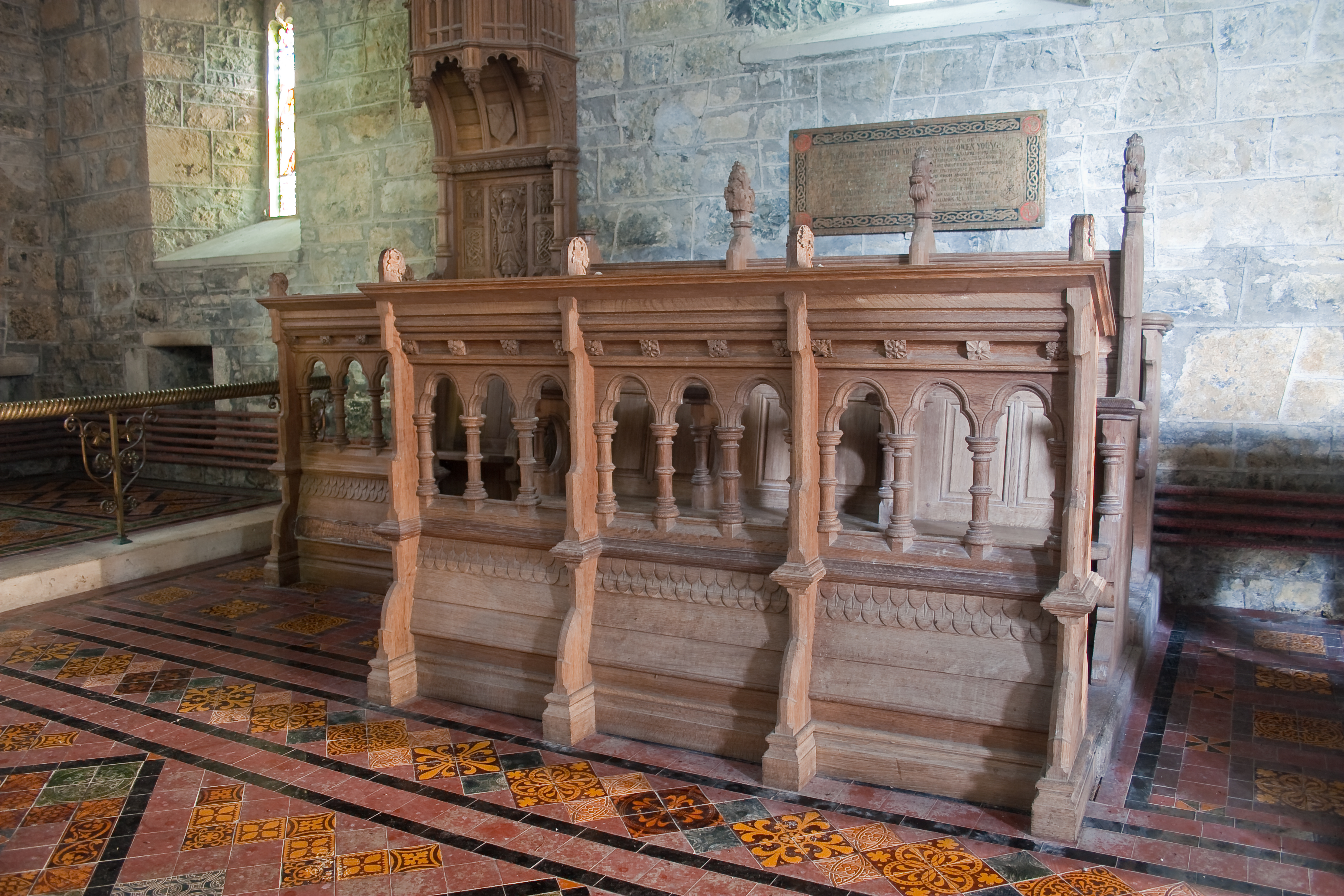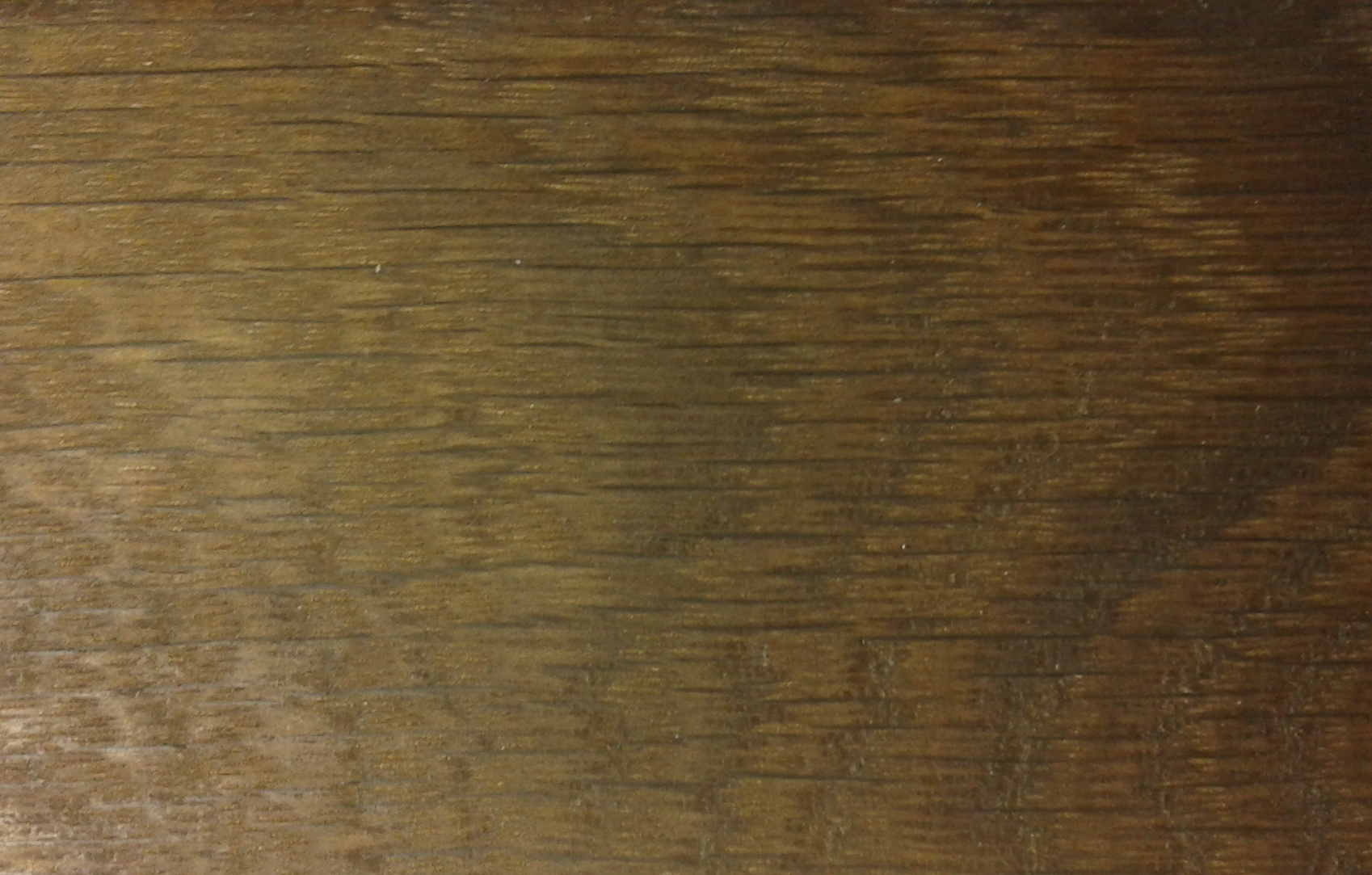Ammonia fuming on:
[Wikipedia]
[Google]
[Amazon]
 Ammonia fuming is a
Ammonia fuming is a


 The wood to be fumed is placed in a sealed chamber with all the surfaces to be fumed exposed to freely circulating air. A large shallow container of ammonium hydroxide solution is placed on the floor of the chamber and the chamber is sealed. If the chamber is large or the fuming is to be done for a long time, more than one container may be provided, or the ammonia may be replenished during the process. The fuming time depends on the amount of darkening required, the size of the chamber, and the strength of the ammonia used. It is usual to
The wood to be fumed is placed in a sealed chamber with all the surfaces to be fumed exposed to freely circulating air. A large shallow container of ammonium hydroxide solution is placed on the floor of the chamber and the chamber is sealed. If the chamber is large or the fuming is to be done for a long time, more than one container may be provided, or the ammonia may be replenished during the process. The fuming time depends on the amount of darkening required, the size of the chamber, and the strength of the ammonia used. It is usual to
 Ammonia fuming is a
Ammonia fuming is a wood finishing
Wood finishing refers to the process of refining or protecting a wooden surface, especially in the production of furniture where typically it represents between 5 and 30% of manufacturing costs.
Finishing is the final step of the manufacturing ...
process that darkens wood and brings out the grain pattern. It consists of exposing the wood to fumes from a strong aqueous solution
An aqueous solution is a solution in which the solvent is water. It is mostly shown in chemical equations by appending (aq) to the relevant chemical formula. For example, a solution of table salt, or sodium chloride (NaCl), in water would be re ...
of ammonium hydroxide
Ammonia solution, also known as ammonia water, ammonium hydroxide, ammoniacal liquor, ammonia liquor, aqua ammonia, aqueous ammonia, or (inaccurately) ammonia, is a solution of ammonia in water. It can be denoted by the symbols NH3(aq). Although ...
which reacts with the tannin
Tannins (or tannoids) are a class of astringent, polyphenolic biomolecules that bind to and precipitate proteins and various other organic compounds including amino acids and alkaloids.
The term ''tannin'' (from Anglo-Norman ''tanner'', ...
s in the wood. The process works best on white oak
The genus ''Quercus'' contains about 500 species, some of which are listed here. The genus, as is the case with many large genera, is divided into subgenera and sections. Traditionally, the genus ''Quercus'' was divided into the two subgenera '' ...
because of the high tannin content of this wood. Fumed oak is also called smoked oak. Other species may also be fumed, but usually will not darken as much as white oak. The introduction of the process is usually associated with the American furniture maker Gustav Stickley
Gustav Stickley (March 9, 1858 – April 15, 1942) was an American furniture manufacturer, design leader, publisher, and a leading voice in the American Arts and Crafts movement. Stickley's design philosophy was a major influence on American ...
at the beginning of the 20th century, but fuming was certainly known in Europe before this.
Process


 The wood to be fumed is placed in a sealed chamber with all the surfaces to be fumed exposed to freely circulating air. A large shallow container of ammonium hydroxide solution is placed on the floor of the chamber and the chamber is sealed. If the chamber is large or the fuming is to be done for a long time, more than one container may be provided, or the ammonia may be replenished during the process. The fuming time depends on the amount of darkening required, the size of the chamber, and the strength of the ammonia used. It is usual to
The wood to be fumed is placed in a sealed chamber with all the surfaces to be fumed exposed to freely circulating air. A large shallow container of ammonium hydroxide solution is placed on the floor of the chamber and the chamber is sealed. If the chamber is large or the fuming is to be done for a long time, more than one container may be provided, or the ammonia may be replenished during the process. The fuming time depends on the amount of darkening required, the size of the chamber, and the strength of the ammonia used. It is usual to oil
An oil is any nonpolar chemical substance that is composed primarily of hydrocarbons and is hydrophobic (does not mix with water) & lipophilic (mixes with other oils). Oils are usually flammable and surface active. Most oils are unsaturated ...
the wood after fuming to fully bring out the effect.
Advantages and disadvantages
Fuming has an advantage overstaining
Staining is a technique used to enhance contrast in samples, generally at the microscopic level. Stains and dyes are frequently used in histology (microscopic study of biological tissues), in cytology (microscopic study of cells), and in the ...
because it does not obscure the grain, it merely darkens it. Unlike staining, there is no possibility of blotches or runs. Fuming is also colourfast. Fuming has the disadvantage that it is not a precise process. Different batches of wood will react to fuming differently. For this reason, wood to be fumed for a project is often harvested from the same tree. Even so, boards from the same tree, and different regions of the same board, can still have a noticeably different colour. Where a consistent colour is important, staining or aniline dye
Aniline is an organic compound with the formula C6 H5 NH2. Consisting of a phenyl group attached to an amino group, aniline is the simplest aromatic amine. It is an industrially significant commodity chemical, as well as a versatile starting m ...
ing may be better options.
Fuming has some safety issues. The solution of ammonium hydroxide
Ammonia solution, also known as ammonia water, ammonium hydroxide, ammoniacal liquor, ammonia liquor, aqua ammonia, aqueous ammonia, or (inaccurately) ammonia, is a solution of ammonia in water. It can be denoted by the symbols NH3(aq). Although ...
used is much stronger (26% to 30%) than in household ammonia
Ammonia is an inorganic compound of nitrogen and hydrogen with the formula . A stable binary hydride, and the simplest pnictogen hydride, ammonia is a colourless gas with a distinct pungent smell. Biologically, it is a common nitrogenous was ...
and is corrosive. The fuming must be done in an enclosed sealed chamber. Ammonia splashes can burn skin and the fumes can cause burns to eyes and lungs. Operators need to wear gas masks, gloves and eye protection.
The darkening of the colour relies on the ammonia reacting with tannin
Tannins (or tannoids) are a class of astringent, polyphenolic biomolecules that bind to and precipitate proteins and various other organic compounds including amino acids and alkaloids.
The term ''tannin'' (from Anglo-Norman ''tanner'', ...
s in the wood. The process is usually applied to white oak
The genus ''Quercus'' contains about 500 species, some of which are listed here. The genus, as is the case with many large genera, is divided into subgenera and sections. Traditionally, the genus ''Quercus'' was divided into the two subgenera '' ...
, as this wood has a high tannin content. Red oak
The genus Oak, ''Quercus'' contains about 500 species, some of which are listed here. The genus, as is the case with many List of the largest genera of flowering plants, large genera, is Taxonomic rank#Ranks in botany, divided into subgenus, subgen ...
may turn greenish rather than deep brown. Other species may not darken as noticeably as white oak, depending on the tannin content. The effect of fuming can be enhanced in non-tannic woods by applying a coat of tannic acid
Tannic acid is a specific form of tannin, a type of polyphenol. Its weak acidity ( pKa around 6) is due to the numerous phenol groups in the structure. The chemical formula for commercial tannic acid is often given as C76H52O46, which correspon ...
to the surface before fuming.
History
Fuming was an accidental discovery in England after it was noticed that oak boards stored in a stable had darkened. This was caused by the ammonia fumes from the horse urine reacting with the wood. At the end of the 19th and beginning of the 20th centuries fuming became popular with furniture makers in the Arts and Crafts movement. The technique was introduced to the US byGustav Stickley
Gustav Stickley (March 9, 1858 – April 15, 1942) was an American furniture manufacturer, design leader, publisher, and a leading voice in the American Arts and Crafts movement. Stickley's design philosophy was a major influence on American ...
in 1901 and a manufacturing technique was perfected in the mission style furniture line of the Stickley family business. Stickley also described a method of fuming the wooden architecture of an entire room by placing bowls of ammonia in the room and sealing it. This method was not very practical and quite dangerous for the person placing the ammonia without personal protective equipment
Personal protective equipment (PPE) is protective clothing, helmets, goggles, or other garments or equipment designed to protect the wearer's body from injury or infection. The hazards addressed by protective equipment include physical, elec ...
available to modern workers. Stickley was quickly followed by other American Arts and Crafts furniture makers such as Charles Limbert
Charles P. Limbert (1854-1923) was an American furniture designer. He is considered one of the most successful furniture leaders in the history of Grand Rapids and the Arts and Crafts movement in America. The furniture that bears his name is high ...
and the Roycroft
Roycroft was a reformist community of craft workers and artists which formed part of the Arts and Crafts movement in the United States. Elbert Hubbard founded the community in 1895, in the village of East Aurora, New York, near Buffalo. Parti ...
community.Rodel, page 57
References
Bibliography
*David M. Cathers, ''Gustav Stickley'', Phaidon Press, 2003 . *Michael Clark, Jill Thomas-Clark, ''The Stickley Brothers'', Gibbs Smith, 2002 . *Paul N. Hasluck, ''Manual of Traditional Wood Carving'', Courier Dover Publications, 1977 . *Kevin Rodel, "Fuming with ammonia", in ''Finishes & Finishing Techniques'', pages 56–60, Taunton Press, 1999 . *Bruce Smith, ''The Beautiful Necessity: Decorating with Arts and Crafts'', Gibbs Smith, 2004 . *Gustav Stickley
Gustav Stickley (March 9, 1858 – April 15, 1942) was an American furniture manufacturer, design leader, publisher, and a leading voice in the American Arts and Crafts movement. Stickley's design philosophy was a major influence on American ...
, ''The 1912 and 1915 Gustav Stickley Craftsman Furniture Catalogs'', Courier Dover Publications, 2012 .
{{Good Article
Ammonia
Wood finishing techniques
Handicrafts
History of furniture
Arts and Crafts movement